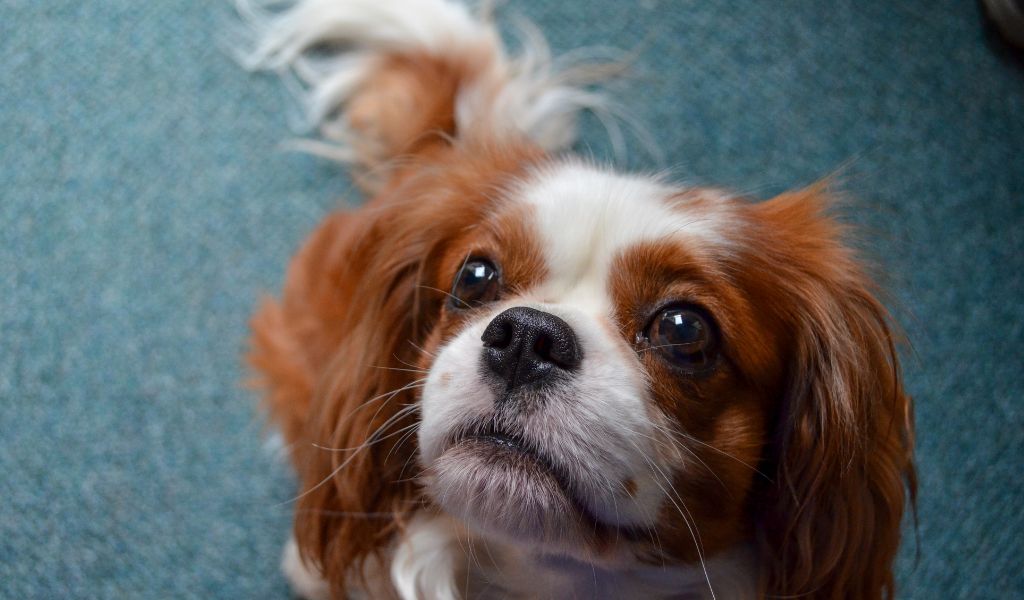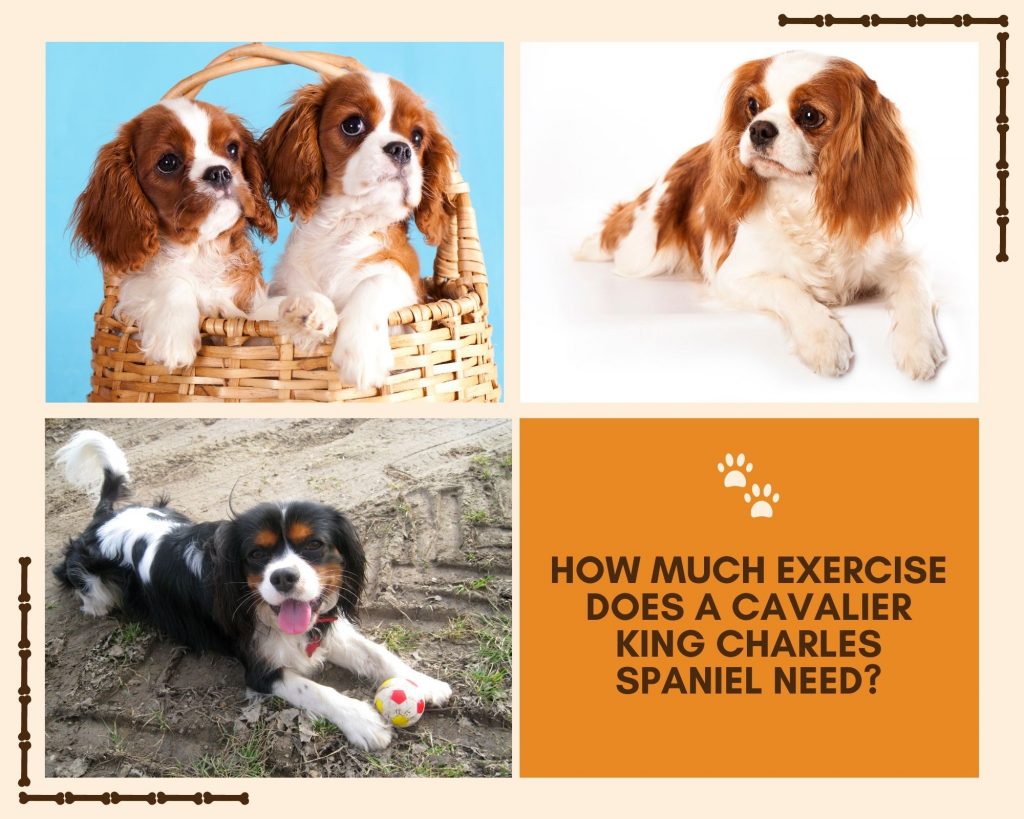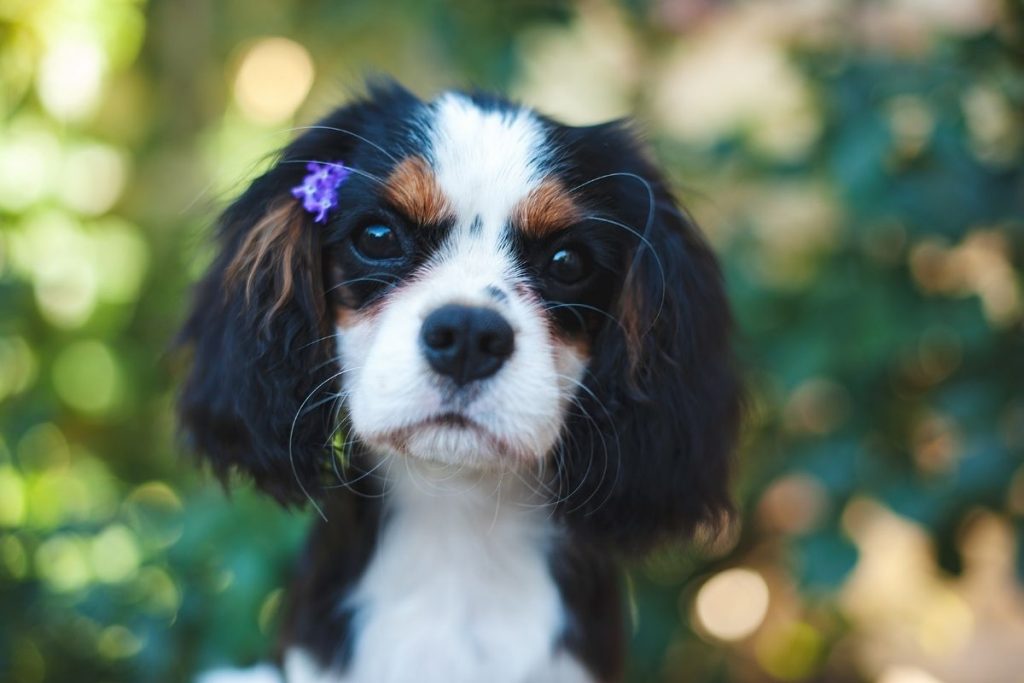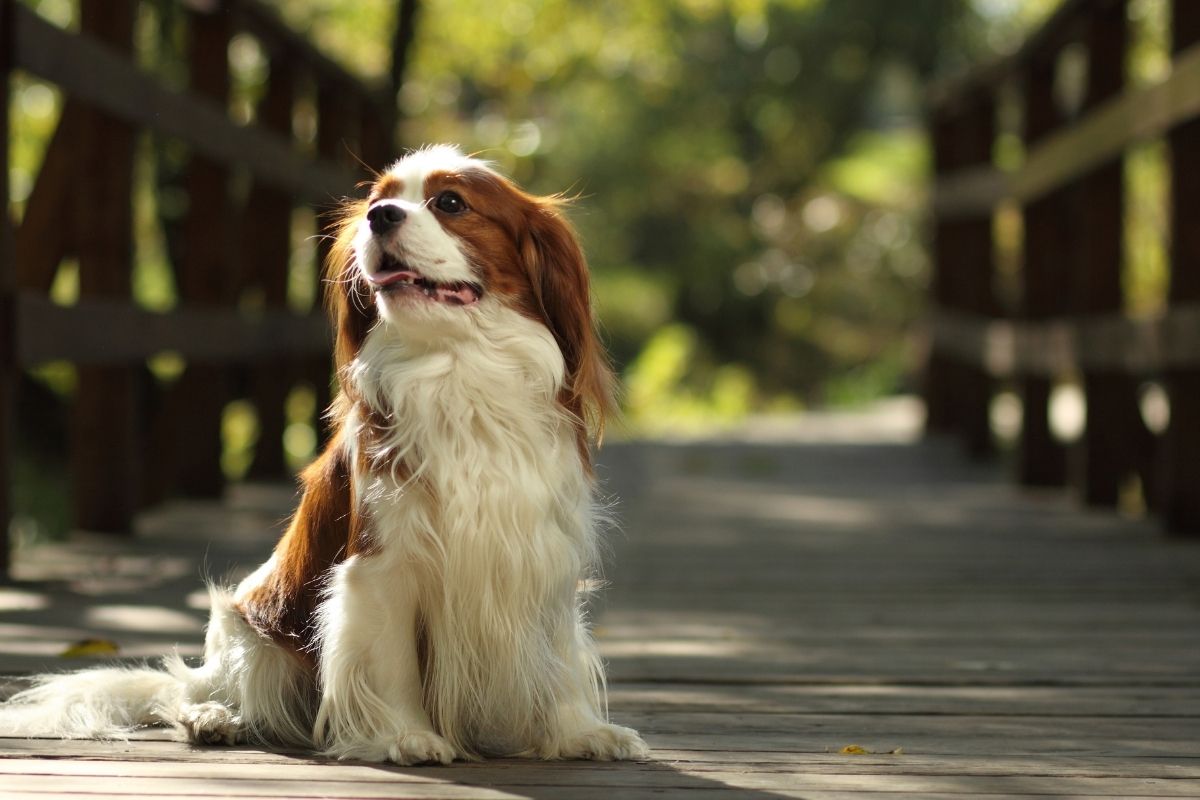Cavalier King Charles Spaniels are a popular dog breed with a sweet and gentle temperament.
As one of the smaller spaniel breeds, they require less exercise than their medium to large counterparts, but still need regular walks or playtime outside in order to be happy and healthy.
Read more for information on how much exercise does a Cavalier King Charles Spaniels need per day.
Cavalier King Charles spaniels enjoy a good walk and will happily walk for hours given the opportunity. You should provide your Cavalier King Charles with at least an hour’s exercise every day which should incorporate some free running, off the lead, so that he can explore, sniff and be a spaniel.
How much exercise does a Cavalier King Charles puppy need?
Although puppies seem to have bags of energy, they get tired quickly and will soon stop to rest.
Your Cavalier puppy will get plenty of exercise through playing in the house and you will only need to take him out when he needs the toilet – you should let him scamper around while he sorts himself out.
Too much exercise at a young age can do more harm than good and could result in bone or joint problems when the dog is older.
As your puppy increase in age, strength and size you can gradually increase the length of walks, exercise periods and playtimes.
What about older Cavalier King Charles spaniel, how much exercise should they have?
Older Cavalier King Charles Spaniels are more sedate and need only an hour of exercise each day.
This should be a gentle walk with some off the lead time in order to play and explore.
A lot will depend upon the general health of your spaniel and his levels of fitness.
As is the case with humans, if your Cavalier has led an active and healthy lifestyle as a younger dog then he is more likely to be able to enjoy longer walks and periods of exercise than a dog that has led a sedentary lifestyle.
[amazon box=”1731551061″ template=”horizontal”]
How can I improve my Cavalier’s exercise levels?
You should provide your Cavalier King Charles with a suitable environment and opportunities to exercise and play outside of the walks.
A secure and safe garden is a good place for him to run around, as well as providing space inside the home where he can scamper up and down stairs or jump on and off the furniture.
Providing a variety of toys, both for you to play with and for him to play with independently will also help him to get exercise when he needs it.
What are the best forms of exercise for a Cavalier King Charles spaniel?
Any type of exercise that appeals to his ‘spaniel needs’ will be great for your Cavalier.
When thinking about what you can do with him you should consider his instinctive desires as a hunting dog.
So, when exercising your spaniel:
Let him enjoy free running exercise when he can explore and get his nose down.
Encourage him to explore bushes, rushes and thick grass, anywhere where he can get into to explore.
Scent related activities are great forms of exercise for most dogs, and are one of the best for a spaniel.

Games such as ‘fetch’ where you throw or roll a tennis ball into some cover, such as long grass and where he has to use his nose to find it, are incredibly satisfying for spaniels.
Try canvas dummies, tennis balls, rolled up socks and anything that is reasonably soft that carries a smell.
This form of exercise challenges your spaniel’s brain and the combination of physical and mental activity will tire him out and keep him happy.
How far should you walk a Cavalier King Charles spaniel?
An average, healthy Cavalier King Charles spaniel should be able to walk around 4 to 5 miles.
This isn’t a distance that you should aim for every day and, in reality, you should be looking to walk your Cavalier for around a mile every day.
This can be on the lead, off the lead or a combination of both.
If you can include other exercise such as swimming, training and other activities then the overall distance can be reduced.
Of course length of walks will depend on weather and how much time you have – but your spaniel won’t be too bothered about either of those.

Extreme weather conditions and spaniel exercise
Just as with humans, dogs have a limited tolerance for extremes of temperature.
If you are walking your Cavalier King Charles spaniel in hot weather you need to be aware of the heat and take care not to overdo it.
There are several things that you can do to help protect him from getting too warm:
Don’t exercise him in really hot weather if you can avoid it, better to wait until later in the day when it has cooled down to take him for a walk.
Keep track of your dog’s hydration. Keep plenty of fresh drinking water available at all times, particularly when he is exercising. Don’t allow him to drink from stagnant water.
If he begins to pant excessively take this as a sign that you need to slow down and reduce the intensity of your walk so that he can cool down more efficiently.
In very hot weather you should also avoid exercising your dog in the middle of the day, or at least be sure not to exercise him for longer than a normal walk, or you could take him for a paddle or swimming.
Slowly acclimatising your Cavalier King Charles spaniel to warmer weather will allow him to cope with this better.

In cold weather it is important to consider the temperature and how this could affect your dog.
If he gets wet ( which is likely from snow and other adverse weather ) then he will quickly get cold and, like people, dogs can suffer from hypothermia ( getting too cold ) which can quickly become serious, and even fatal.
Although he will need to go out, regardless of the weather conditions, if the weather is brutal and cold then keep time outside to a minimum.
Consider also getting him a form of dog coat which will help to protect him from rain and wind and will provide a layer of insulation.
Final Words
It is important to bear in mind that just because your Cavalier King Charles spaniel needs more exercise than most other breeds it doesn’t mean that you have to run him into the ground.
The overall purpose of providing regular, short walks for your spaniel is to allow him to get out of the house and explore his surroundings while providing an outlet for his seemingly unending energy.
The walk should be something that he looks forward to, rather than dreads and you should aim to make it fun without exhausting your dog.




